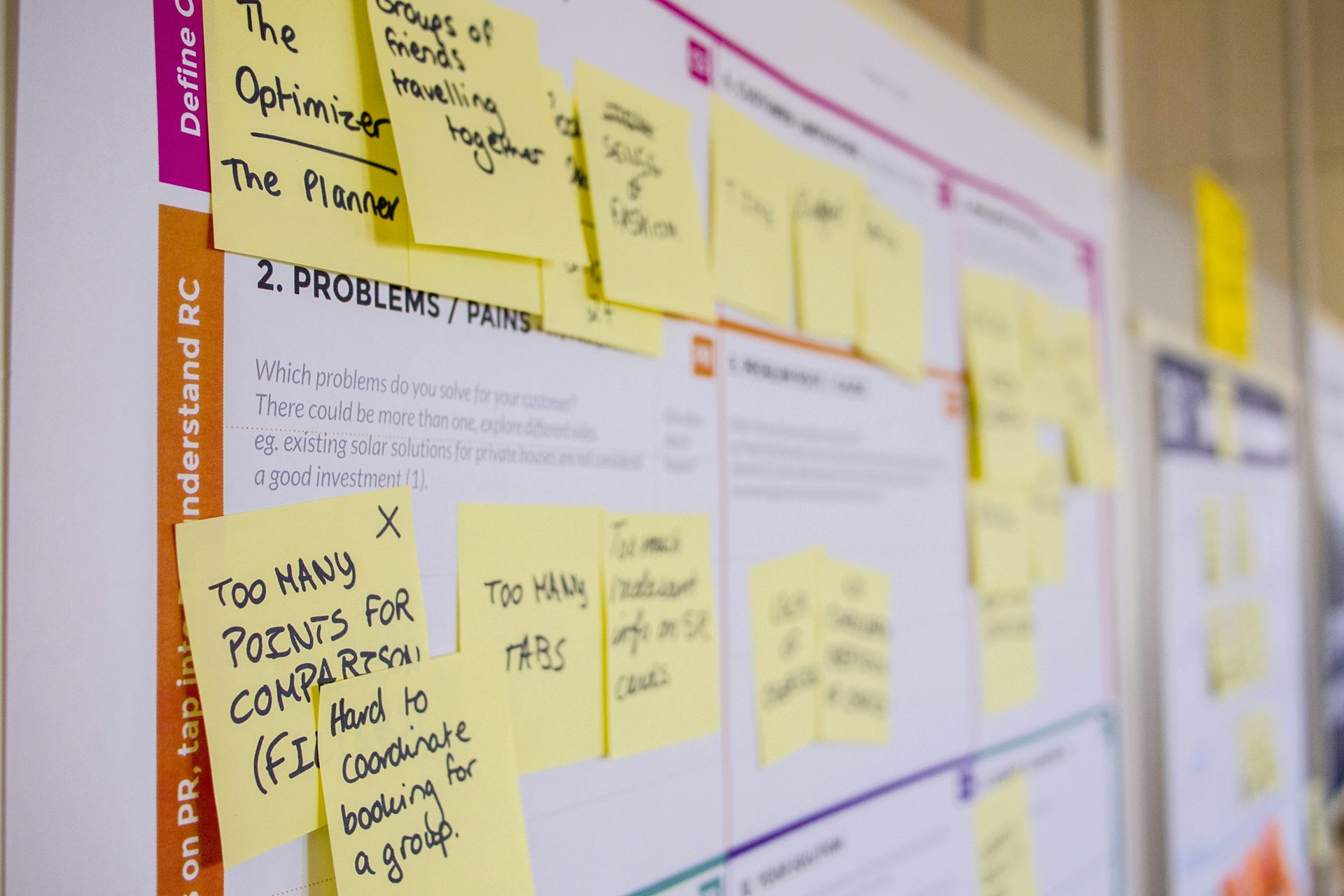- Transform Your Projects into Smooth Operations: Streamline project management now to boost efficiency, prevent chaos, and deliver impressive results every time.
- Slay Scope Creep Fast: Set clear goals, control the budget, and have a backup plan in place to keep projects on track and under control.
- Leverage Tools for Success: Use the right project management tools to assign tasks, track progress, and eliminate bottlenecks for maximum team efficiency.
- Communicate for Flawless Execution: Keep your team aligned with regular updates, open data access, and clear communication to ensure seamless collaboration.
Welcome to the circus that we call project management. Ever felt like you’re juggling flaming torches while riding a unicycle on a tightrope? You nod with eyes wide and circles dark.
Well, it’s time to transform that circus act into a well-choreographed magic show that’s not just fun, but ruthlessly efficient.
Because being a project manager is a challenging job regardless of project scope, and we know it’s hard to achieve project management freedom. But designing the most efficient project management cycle is a must. After all, you’ll be using it over and over again.
A project manager oversees all facets of an agency’s project management process. The clients, the resources, and the team. Before you panic, take a deep breath and let us help you turn your anxieties and worries into the confidence and determination you need to ace the entire project management life cycle.
A project life cycle is a systematic process that offers clarity in the delivery of your projects. It benefits not only you as a project manager, but all relevant stakeholders as well.
What is the project management process?

The project management process is a set of organized steps that guide a project from start to finish. This process ensures that project goals are met, within budget, and to the expected standard.
A solid project management process should guide the project from inception through to the monitoring and successful completion, while ensuring that each step is consistent and designed to achieve the project objectives.
It also helps teams to allocate resources, anticipate risks and communicate with stakeholders. By providing structure and accountability, the process facilitates better decision-making and keeps everyone aligned with the project's vision, scope, and timeline, thereby increasing the chances of success.
5 Phases to the Project Management Process
- Initiation phase: Project initiation is where we understand the project’s scope and what is expected of us. Work Breakdown Structure is a tool that can help you flesh-out this stage.
- Planning phase: Project planning is the second step, where we define in detail the deliverables, cost, scope, and timeline and get to choose the critical path method.
- Execution phase: This is the phase where we start implementing the plan.
- Monitoring phase: Monitoring is the stage where we use project management tools to get an overall picture of our project’s process. We may use Trello, JIRA, ClickUp, or Microsoft Project.
- Closure phase: This is the end of the project or closeout, where we wrap up any unfinished businesses, brief all the project stakeholders, officially close the project and archive all process documentation that will be used for future reference.
Each phase consists of specific activities that help you organize and control the entire project duration. Sound too good to be true? Read on to find out how the project life cycle can guide you in optimizing your agency’s practices and processes!

Initiating a project
Before you begin the work, start the project by understanding the essential pieces. The first of the five phases of the project management process where it is important to establish communication channels and determine the feasibility of the project.
This phase determines the general lines of the project, where it is proven how much value adds to the company and gets its acceptance. The initiation phase is also where the technical requirements are laid out by establishing who your team members are and what tools you need. Project initiation also includes indicating the project’s goals in the project brief.
A project manager can also start to manage achieve project objectives during project initiation by conducting feasibility testing. What is feasibility testing, you say? Feasibility testing is where you identify the primary problem (or opportunity) and verify that your project will address that problem.
Constructing a business case will also help weigh the possible costs and gains and decide if it’s worth moving forward with the project. This is a detailed justification of the proposed project, including a breakdown of the risks, benefits, and timeline, and it should be reviewed by the organization’s leaders as well as key stakeholders.
In addition to the business case, what other things should be prepared in the project initiation phase? Project managers also identify the business needs and put them in writing by drafting a project charter. It defines what your project is and justifies it with the results of the feasibility study performed. For more complex projects, a project initiation document is prepared so that all parties can review the project’s essential details.

Scoping out the project
The project planning phase involves identifying the project scope and other information to make the project initiation phase more specific. This is also the phase when you define in detail the specific objectives, deliverables, and roadmap of the project. In addition, it gives a more detailed rundown on the cost and project timeline required for the team to deliver the expected output. This helps prevent scope creep, so you don’t do more work than is necessary or planned. Scope creep may be lingering around, waiting for a loophole in this phase before it strikes, at the weakest section not handled in the planning phase, and boom, your project will eventually be heading towards collapse and a miserable fiasco.

The planning phase may be one of the most significant phases of project management because this is where the project team meets for the first time and discusses the project plan’s inclusions through a kick-off meeting. It may also be the only opportunity for you to create a stakeholder register, i.e., a list of all involved parties and information on their role or interest in the project.
Aside from the stakeholder register, there are other components in the project management plan. For example, the project plan is a handbook guide that should be checked, revised, and updated according to the project’s specifications. Other documents required to be prepared and discussed in the project planning phase may include:
- A risk management plan that takes into account all identifiable and foreseeable risks. It also includes planning out any project dependencies and their impact on the overall timeline.
- A communication plan to schedule communication with external contributors. The communication plan also includes milestones and methods used to communicate.
- A scope statement lays out the project scope, limitations, and exclusions on funds, schedule, people, and other resources.
- A work breakdown structure based on project goals and scope. Also called the work breakdown schedule, it divides the tasks into more manageable pieces for your team.
- A financial plan that pinpoints the estimated budget and cost estimates as well as the potential ROIs.
Project execution

The project execution phase is the implementation of the conceptualized project plan. It is the actual “giving birth” of deliverables as an output of working on specific tasks. Work processes are carried out together with tracking systems and status meetings to check if the project is moving forward. Status reports are provided to the project manager to modify the project plan and adjust the schedules of resource procurement and team members if needed.
Planned workflow diagrams are also central to the life cycle phase of project management. But what are workflow diagrams? These graphical representations give your project team an idea of how each step or task should progress, who is responsible at a certain point in the implementation of the project, and how the work is carried out from start to finish. Uniformity in performing a task is essential to standardize the quality, especially when it comes to repetitive functions. This standardization is also important when teaching new team members how to perform these tasks.
As project managers, it is also essential to have a reliable tool that will help make the project execution a lot easier to handle. Otherwise, how would you be able to divide your time and attention among all the aspects of the project coming and going in different directions? Project execution usually takes the number one spot out of the five project phases where getting organized is essential.
Project management software such as Asana, Teamwork, Monday, Click-up, and other online applications can automate various functions in your team. Using project management tools such as workflow software in the project execution phase efficiently syncs your daily or weekly tasks according to your specified order of importance and date of completion. You can also adjust schedules systematically and manage your time by keeping yourself updated in real-time.
Project monitoring
Everyone has a project management methodology that works for them. For some managers, it may be through Agile or Lean techniques; others may find Waterfall or Six Sigma more effective. What is important is making sure the chosen methodology works for you and your team.
The project monitoring phase is an opportunity to step back and take a big-picture look at the overall project progress, which is essential in ensuring the project runs smoothly. Key performance indicators of an agency are an excellent basis for measuring project performance. Schedule tracking, high-quality deliverables, monitoring expenditures, and utilization of resources are all crucial for a successful project management process.
Changes made in the duration of the project life cycle can also be evaluated during this project phase. For example, what are the problems raised? How frequently did your team experience the same concern? Who are the involved parties? Are the issues answered? How long did it take to be resolved? Documenting the answers to these questions improves the project performance and ensures that the project management plan is updated and on track.
While you’re at it, keeping all stakeholders up-to-date will provide transparency and show your assertive communication and management skills. Trust us, they will appreciate all those little updates (and spare you from the awkward “how’s it going” queries)!
Project close

The last of the five project management phases is the project closing phase. The project closure phase identifies what you need to do to finally get approvals, close out the project, and sign off. A green light from the project management body, including external stakeholders, is vital before closing the project entirely. There is usually quite a bit of work to be done even after the final output!
The project remains like an unconsumed budget; closed vendor contracts, software subscriptions, and the remainder of other documents and resources should be appropriately released and turned over as soon as the final output has been delivered and the project finalized and established. The final project budget, along with the list of unaccomplished tasks and their commitment date of completion, should be specified to close the project formally. Finally, don’t forget to send final updates to ALL stakeholders! They may ask for a breakdown of the concluded project expenditures or ask for an evaluation to assess learnings and constructive reviews.
Within the team, you can control project closure by holding a project debrief for your agency. Discuss the failures and restraints you experienced during the project and give feedback on the team’s group and individual performances. This can help wrap up unfinished business and prepare team members to be emotionally and physically ready to take on new challenges. It is also a great way to celebrate and be motivated for future projects!
Techniques of Project Management

Project managers require techniques that guide them in managing their projects throughout the process. These are not just helpful. They are needed for structure, visibility and control across multiple tasks and deliverables.
These techniques are also necessary, especially when managing multiple projects simultaneously, and they vary for different project managers.
Traditional techniques:
These methods work great for projects with well-defined phases and clear task dependencies. Both techniques are linear and sequential in their approach, making them best suited for tasks such as building construction and event planning. Examples include Waterfall and Critical Path Method.
One of the big advantages is the predictability they bring, which is perfect for teams that need to stick to strict timelines and budgets.
Agile methodologies such as Scrum, Kanban, and Extreme Programming (XP)
These techniques are best suited for projects with repetitive processes and changing priorities. For example, software development projects that incorporate continuous updates and user feedback into each release.
Agile is for fast paced environments where collaboration, flexibility and quick response to change are key to the project’s success.
Approaches with a change-management focus
These are designed to handle high levels of uncertainty and rapid change. They are flexible and open to ongoing risk analysis, allowing them to easily adjust to the plan rather than sticking to a rigid schedule. Examples include Event Chain Methodology (ECM) and Extreme Project Management (XPM).
These are especially useful in industries where external factors like market trends or regulations can change the project's direction midway.
A process-based approach, such as Lean project management
This method focuses on reducing waste and creating value by increasing efficiency and improving project delivery. The project manager eliminates every activity that doesn't add value to the project. It can apply to every project.
Lean is good for teams that want to streamline, improve workflow and deliver more customer value with fewer resources.
Key Takeaways
Knowing the five stages of the project management process makes you a better project manager and team leader. You become equipped with broader awareness, and the opportunity to practice your skills, on making project success a little less difficult. To review, here are the phases of the project management process:
- The initiation phase is where all the general information about the project is conceived and justified
- The planning phase constitutes the project scope, objectives, direction, and deliverables discussed in detail to prevent scope creep
- The project execution or the actual process of constructing the product or service.
- The monitoring phase deals with the tracking and controlling of project resources and overall progress
- The closing phase is where the deliverables get handed over and approved, ending with an evaluation of the entire process and the learnings experienced
What will you gain by observing these stages? Your team will surely have more clarity on the procedures to be done and a motivated mindset knowing what to expect next. If you and your team dream of taking on your next projects with ease, then let ScaleTime help you scale up your project management process!
And if you’re dreaming of taking on your next project with less stress and more structure, we’ve got your back.
Grab our free Project Management Checklist to start organizing like a pro and keep your projects running smoothly from start to finish!
With ScaleTime, you don’t have to figure it all out alone. We’ll help you fix (or build) your policies, processes, and procedures to give you the right structure that helps your agency run like clockwork, so your business is ready for growth.
FAQ
What is the project life cycle?
The project life cycle is a structured framework that defines the various phases a project undergoes from inception to completion. The project management cycle includes: initiation, planning, execution, monitoring and controlling, and closure.
What Is the Difference Between Stage and Phase?
In project management, a phase is a broader segment of the project lifecycle (like planning or execution), while a stage is a breakdown of these segments into smaller steps or checkpoints within a phase.
How can businesses benefit from project management tools?
Businesses can profit from project management tools through improved collaboration. These tools make it easy for team members to communicate and share updates in one place. Project management tools also allow managers to monitor deliverables in real-time and keep tasks clearly outlined.
How often should I review my project management processes?
Project management processes should be reviewed regularly to ensure efficiency at every phase and stage. However, generally, you should review complex projects on a weekly or bi-weekly basis, and simpler ones on a monthly basis.





















%20(1).gif)





